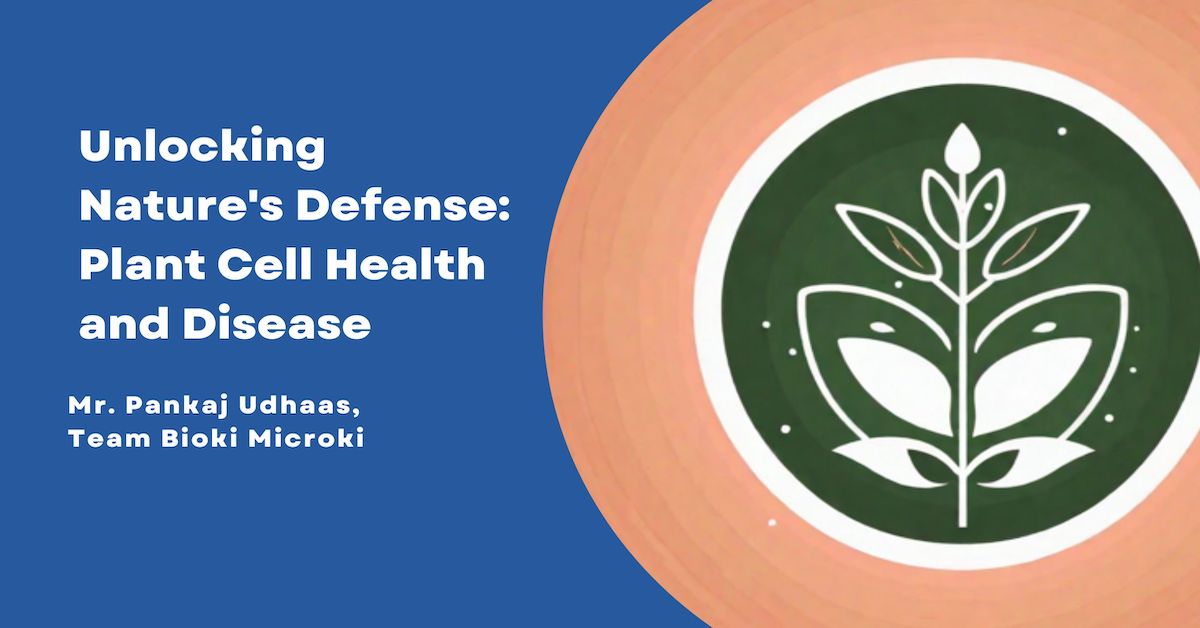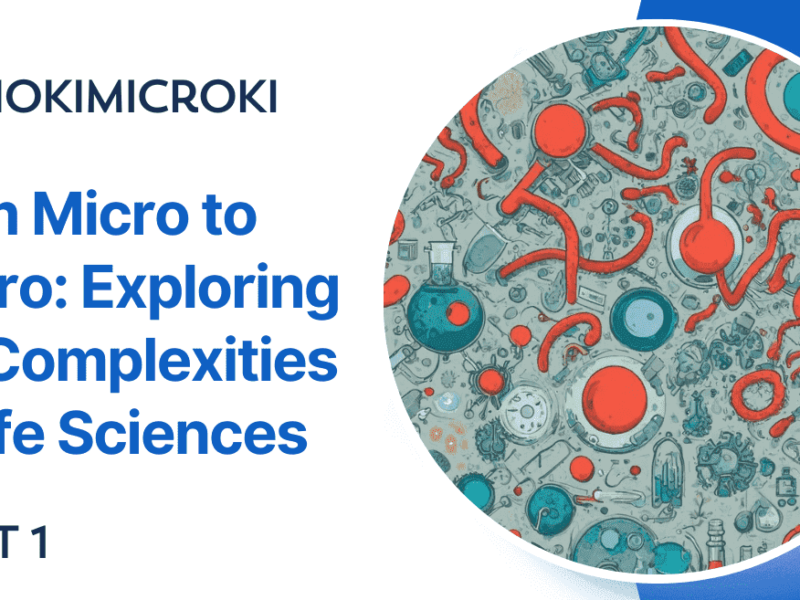Plant Cell are super important in the productivity and overall vitality of plants. It serves as the fundamental building blocks which contribute to several essential functions. These play a vital role in plant structure, growth, development, and adaptation to environmental challenges. But why is it important for us to learn about it? There are several reasons for this including food security as we are dependent on agriculture for our dietary requirements, environmental sustainability as plants play a vital role in ecosystem balance, Climate Change mitigation as healthy plants contribute to air purification, and climate resilience, and so on.
Table of Contents
- Introduction to Plant Cell Health & Disease
- Plant Cell Structure and Function
- Common Plant Diseases
- Plant Defense Mechanisms
- Strategies for Promoting Plant Cell Health
Introduction to Plant Cell Health & Disease
Plant cell health is very important to a plant’s overall vitality and productivity because it directly affects important biological processes. Healthy plant cells ensure efficient photosynthesis, nutrient uptake and metabolic activity, resulting in robust growth, development and reproduction.Plant cell health plays a major role in crop yield, quality, and nutritional value, which in turn are quintessential for food security, agricultural sustainability, and human nutrition.
Heading to the other part of the blog: Plant Cell Diseases. Plant diseases are fatal to agricultural production and ecosystem health. Fungi, bacteria, viruses, and nematodes are commonly known pathogens that infect plants, causing different diseases. This results in reduced crop yields, diminished food quality, and increased economic losses for farmers. These diseases not only compromise plant and soil health, but also disrupt ecosystem balance, and threaten biodiversity.
Plant Cell Structure and Function
Like all living beings, Plants have a unique structure and various organelles that perform the necessary functions. The cell wall is made up of cellulose which provides structural support and protection. Inside it, cell membrane regulates the food intake and removal of waste (excreta).
Chloroplast conducts photosynthesis which converts sunlight into energy. Cell activities are fueled by Mitochondria which produce ATP through cellular respiration.
The Cell functions are controlled by the nucleus which houses the genetic material (DNA). Endoplasmic reticulum assists in protein synthesis and transport. Golgi apparatus modifies and packages proteins for export. Vacuoles store water, nutrients, and waste. Plasmodesmata are channels connecting neighboring cells for communication and transport.
Overall, these structures and organelles work together to maintain cell integrity, regulate metabolism, store and process nutrients, and facilitate communication within plant tissues. (A detailed article on this can be read here.)
So, it is crucial to maintain optimum cellular health for plants to grow, develop, and flourish in our ecosystem. Healthy plant cells ensure efficient photosynthesis and sturdy growth and biomass accumulation. If the cellular health is good, it supports structural integrity, disease resistance, and stress tolerance. This enables plants to endure the environmental challenges such as drought, diseases, and pests. If optimum health of plants is maintained, then plants can achieve maximum productivity, adapt to our ever changing conditions, thereby ensuring sustainable agriculture, ecosystem stability, and food security for us humans.
Common Plant Diseases
Plants, like every other natural beings are also prone to diseases. Theses diseases can be classified into a. Fungal b. Bacterial and c. Viral. Let’s have a brief look at each of these:
A. Fungal
Fungal diseases are most commonly associated with loss of plant health, economic losses, and yield reductions in harvesting. Fungi like powdery mildew and Fusarium wilt infect plant cells, leading to symptoms such as leaf spots, wilting, yellowing, and stunted growth. Crop rotation, sanitation, and pruning infected parts are some of the measures that can control the fungi outbreak. In the short run, Fungicides and biological control agents are useful but in the longer run, resistant crop varieties and genetic engineering provide better options.
B. Bacterial
Bacterial infections can have serious adverse effects on plant health leading to yield and crop losses. Xanthomonas, Pseudomonas, and Erwinia species are common bacterial pathogens that cause symptoms like leaf spots, wilting, necrosis, and cankers. These can be mitigated by crop rotation, sanitation, and pruning affected parts.Copper-based bactericides and biocontrol agents can suppress bacterial pathogens, while breeding for resistant cultivars offers long-term solutions.
C. Viral
Pathogens like geminiviruses, potyviruses, and tobamoviruses cause viral diseases in plants. These viral diseases lead to several crop losses worldwide. Mosaic patterns, yellowing, stunted growth, and distorted leaves are some of its commonly known symptoms. Insects, contaminated tools, and infected seeds are the common mediums through which these diseases can spread. Practicing strict sanitation, virus-free planting material, and implementing vector control measures are some of the prevention methods to dodge the viral infections. Early detection, quarantine, and integrated pest management (IPM) approaches are essential for managing viral diseases and safeguarding plant productivity.
Plant Defense Mechanisms
Plants have a natural defense mechanism to guard themselves against the above mentioned diseases. These are 1. Innate Immunity 2. Induced Resistance 3. Genetic Resistance
1. Innate Immunity
Plant have an innate immune response against pathogens that are multifaceted defense mechanisms. The cell wall acts as a physical barriers while the cuticle provides structural protection. Antimicrobial compounds like phytoalexins and enzymes provide chemical defenses. Molecular signaling pathways involve pattern recognition receptors (PRRs) detecting pathogen-associated molecular patterns (PAMPs), triggering immune responses like defense gene activation, reactive oxygen species (ROS) production, and hypersensitive response (HR) to contain infections. Immune responses are regulated by Hormones like salicylic acid (SA), jasmonic acid (JA), and ethylene (ET). Together, these innate immunity components confer plant resistance to pathogens, enhancing plant health and survival.
2. Induced Resistance
Induced resistance is the defense mechanisms that is activated in plants as a response to the interactions with pathogens, microbes, and environmental signals. In these mechanisms antimicrobial compounds are produced alongwith the activation of defense-related genes, and strengthening of cell walls. Plant-microbe interactions, such as mycorrhizal symbiosis and rhizosphere interactions, can induce systemic resistance throughout the plant. Environmental influences such as light, temperature and stress factors also play a role in triggering induced resistance.
3. Genetic Resistance
Genetic resistance is the presence of naturally resistant genes that grant immunity. These genes encode proteins that recognize and defend against the attack by pathogens, resulting in disease resistance. Breeding strategies emphasize on identifying and integrating these genes into crop cultivars via traditional breeding methods or genetic engineering. Marker-assisted selection (MAS) and genome editing technologies facilitate the development of disease-resistant cultivars with improved traits. Genetic resistance provides sustainable solutions for disease control, reduces dependence on pesticides, and promotes environmentally friendly agriculture while increasing crop yields and ensuring food security.
Strategies for Promoting Plant Cell Health
Strategies for promoting plant cell health include approaches aimed at enhancing the vitality, resilience, and functionality of plant cells. These strategies include 1. Integrated Pest Management (IPM) 2. Biotechnology and Genetic Engineering 3. Sustainable Agriculture Practices.
1. Integrated Pest Management
Integrated Pest Management (IPM) is a combination of multiple strategies for effective disease management. One of the strategies is Biological control that involves using natural enemies like predators, parasites, or pathogens to control pests. Next is the Cultural practices that focus on modifying the environment to reduce pest pressure. Alongwith it is crop rotation or planting resistant varieties. Further we have Chemical treatments that can be used judiciously when required to minimize environmental impact. By integrating these approaches, IPM serves as a good option to maximize pest control efficacy while minimizing risks to human health and the environment. It not only promotes sustainable agriculture, but also remains one of the best long-term pest management solutions.
2. Biotechnology and Genetic Engineering
Genetic modification (GM) and other biotechnological techniques provide novel ways to improve plant health and disease resistance. Gene editing (GM) is the process of inserting particular genes into plants to give them characteristics like pest or disease resistance or stress tolerance. Genes encoding antimicrobial proteins or pathogen recognition receptors can be introduced to enhance plant immunity and confer disease resistance. Furthermore, the generation of disease-resistant cultivars is made easier by the precise alterations to plant genomes made possible by biotechnological technologies like genome editing. These biotechnology developments have potential applications in sustainable agriculture, lowering pesticide dependency, increasing crop production, and tackling issues with global food security.
3. Sustainable Agriculture Practices
Plant cell health is given priority in sustainable farming methods by using comprehensive strategies such crop rotation, soil health management, and ecosystem protection. Crop rotation is the practice of switching up crops to avoid depleting the soil, lessen insect accumulation, improve nutrient availability, and increase overall plant vigor. By using organic amendments, cover crops, and little tillage, soil health management aims to preserve soil’s fertility, structure, and biodiversity while promoting healthy plant development and nutrient uptake. These sustainable practices ensure long-term plant cell health, sustainable crop production, and environmental stewardship.
Finally!
We have seen the structure of Plant Cell and its functions alongwith the common diseases that plants may have and the defense mechanisms present in the plant to counter the various diseases. It is absolutely crucial to take proactive measures, research, and collaborate to safeguard plant cell health to ensure food security and environmental sustainability so that we humans can still hope of having a future on this planet.


